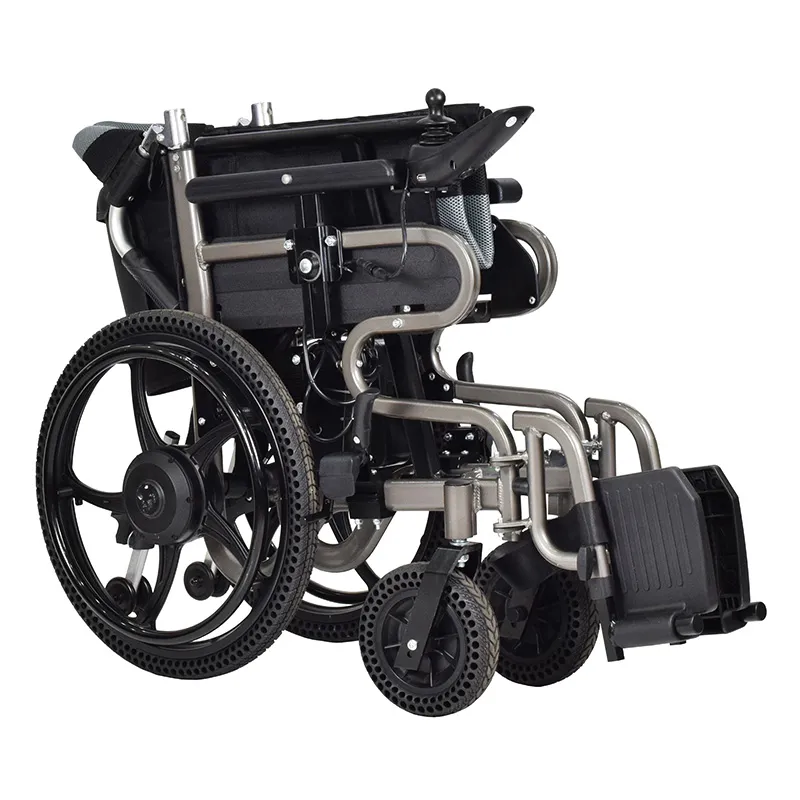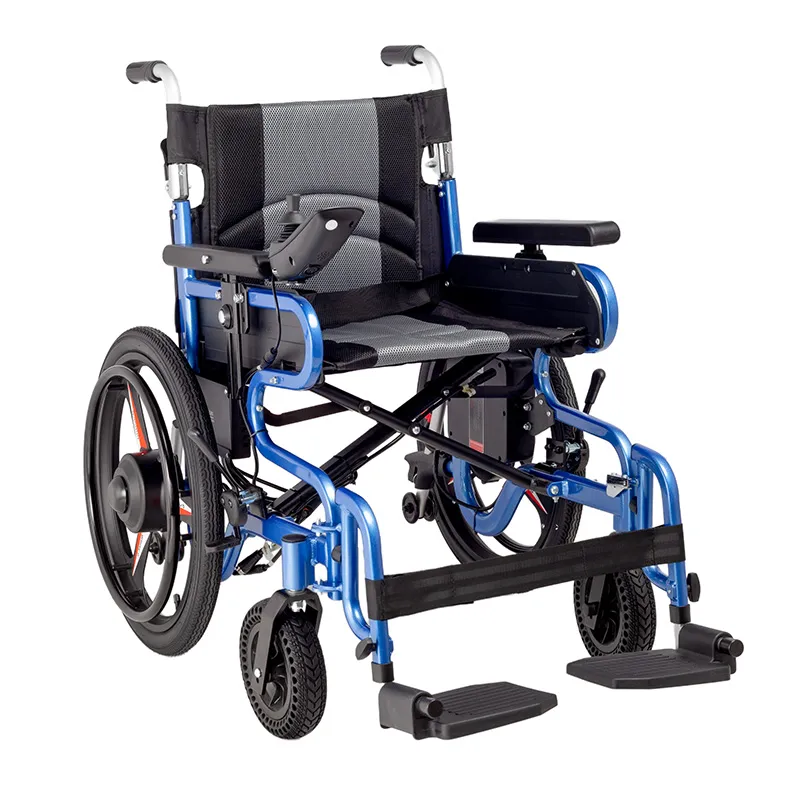
Why can't my electric wheelchair be charged?
2024-10-09 15:30
As an important auxiliary device to help people with limited mobility, electric wheel chairs have greatly improved their quality of life. However, the battery of an electric wheelchair sometimes cannot be charged, which not only affects the user's daily activities, but also may bring potential safety hazards.
This article will explore in detail the common reasons why electric wheel chairs cannot be charged, provide solutions, and share some preventive measures to help users better maintain their power wheelchairs.

The top 5 reasons why electric wheelchairs cannot be charged:
1. Battery problems (battery aging, poor battery connection, battery damage)
2. Charger problems (charger failure, charger mismatch)
3. Charging interface problems (interface damage, dirty interface)
4. Line problems (cable damage, line short circuit)
5. Environmental factors (temperature effects, power supply problems)
Reason 1: Battery problems
Battery aging:
The batteries of electric wheelchairs are usually lead-acid batteries or lithium batteries. These batteries will gradually age and reduce capacity as the use time increases, and eventually lead to failure to charge. The battery life is generally 2-3 years. After this period, the battery performance will significantly decrease, the charging efficiency will decrease, and it may even be unable to charge.
Poor battery connection:
If the battery connection point is loose or oxidized, charging will fail. Loose battery wiring or unclean contact points will affect the conduction of current, resulting in the battery not being able to charge properly.
Battery damage:
The battery may be damaged due to over-discharge, overcharging, physical damage, etc. If the battery shell is cracked or there is a problem with the internal circuit, the battery will not work properly and needs to be replaced with a new battery.
Reason 2: Charger problem
Charger failure:
The charger is a device that provides power to the electric wheelchair battery. If the charger fails, such as internal circuit damage, transformer problems, etc., the battery will not be able to charge properly. You can use a multimeter to detect the charger output voltage to determine whether the charger is working properly.
Charger mismatch:
Different models of power wheelchair batteries require specific chargers. If an unmatched charger is used, the battery may not charge or even damage the battery. It is very important to ensure that you use a charger that matches the battery specifications.
Reason 3: Charging interface problem
Interface damage:
The charging interface is a key component that connects the charger and the battery. If the interface is damaged, such as loose, deformed, or the internal contact point is damaged, the battery will not be able to charge. Check whether the charging interface is intact and replace it if necessary.
Dirty interface:
Dust, dirt or oxide on the charging interface will affect the charging effect. Cleaning the charging interface regularly to keep it clean and in good contact will help avoid charging problems. You can use a clean cloth and an appropriate detergent to gently wipe the interface.
Reason 4: Line problem
Damaged cable:
The charging cable may cause internal cable breakage or outer sheath damage due to bending, pulling, etc. Cable damage will affect current conduction and cause the battery to fail to charge. Check the cable for obvious physical damage and replace it with a new charging cable if necessary.
Line short circuit:
Internal line short circuit may also cause failure to charge. Short circuit problems require professional inspection and repair to avoid greater safety hazards. If you suspect a short circuit problem, do not disassemble the power wheelchair by yourself, and contact a professional maintenance personnel in time.
Reason 5: Environmental factors
Temperature influence:
Battery charging has certain requirements for temperature. Too high or too low temperature will affect the charging effect. Lithium batteries are particularly sensitive to temperature. Too high temperature may cause the battery to overheat, and too low temperature will slow down the charging speed. Make sure to charge in a suitable temperature environment to avoid the impact of extreme temperatures on the battery.
Power supply problem:
The stability of the power supply during charging is also very important. If the power supply voltage is unstable or the power is frequently cut off, the charging effect will be affected. Using a stable power supply for charging can improve the charging efficiency and effect. It is best to use a power socket with a voltage stabilization function to avoid the impact of voltage fluctuations on the charger and battery.

What is the solution for the electric wheelchair not being able to charge?
The solution for the electric wheel chair not being able to charge:
1. Replace the battery
2. Check and replace the charger
3. Repair the charging interface
4. Check and replace the cable
5. Adjust the charging environment
Replace the battery:
If the battery is aged or damaged, you need to replace it with a new one. Choose a battery that matches the original battery specifications and ensure that it is installed and connected correctly. After replacing the battery, check the battery status regularly to ensure that it is working properly.
Check and replace the charger:
Use a multimeter to detect the charger output voltage. If the charger is found to be faulty, replace the charger that matches the power wheelchair. Make sure that the charger specifications are consistent with the battery requirements and check the working status of the charger regularly.
Repair the charging interface:
Check whether the charging interface is loose, deformed or damaged, and replace the charging interface if necessary. Clean the charging interface regularly to keep it clean and in good contact. Be careful not to use too much force to avoid damaging the interface.
Check and replace the cable:
Check whether the charging cable is physically damaged, and replace it with a new one if necessary. Make sure to use a reliable quality cable to improve charging stability. Avoid excessive pulling or bending of the cable to extend the service life of the cable.
Adjust the charging environment:
Charge in a suitable temperature environment to avoid the impact of extreme temperatures on the battery. Use a stable power supply for charging to ensure that the power supply voltage is stable. Try to avoid charging in a humid or high temperature environment to protect the battery and charger.

Expert advice
Rehabilitation engineering experts pointed out that the charging problem of electric wheelchairs may be caused by a variety of reasons, and users should check and eliminate them according to the specific situation. He suggested that when users encounter charging problems, they can first self-check the battery, charger, charging interface and cable, and if they cannot be solved, seek help from professionals in time. In addition, regular maintenance and correct use of charging equipment are the key to ensuring the normal operation and extending the service life of electric wheel chairs.








